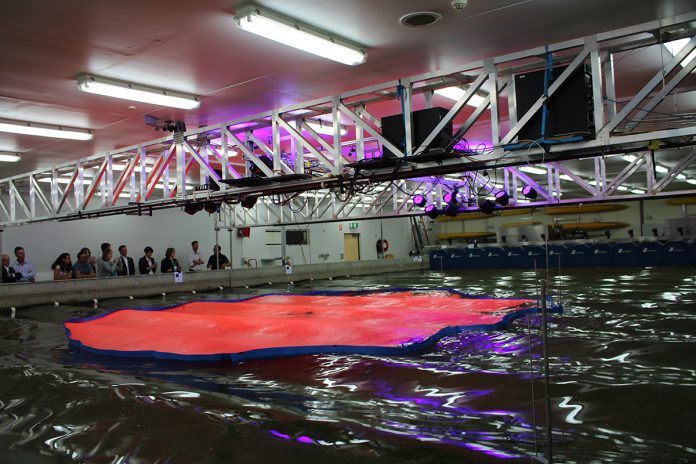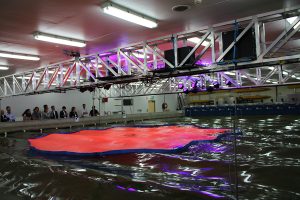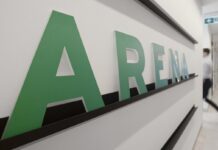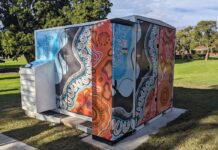
A world-first trial testing of the performance and impact of wave energy farms at model scale was conducted yesterday at the Australian Maritime College (AMC).

AMC, a specialist institute of the University of Tasmania, joined forces with Swinburne University of Technology and industry partners BioPower Systems Pty Ltd and Carnegie Wave Energy to make this project a reality.
The information gathered from the experiments conducted during the two-day meeting will be used to develop a free online modelling tool to assess the ocean wave energy resource in a particular area.
“This research will give industry and investors an impartial assessment of the performance of wave energy farms and provide greater confidence when negotiating large developments. It may also uncover the best arrangements for the devices to provide optimum performance,” said Swinburne University of Technology project lead, Associate Professor Richard Manasseh.
The project was supported by funding from the Australian Renewable Energy Agency (ARENA).
“This is an excellent example of knowledge sharing, bringing together expertise from across Australia’s wave energy sector. This kind of collaboration is critical to advancing renewable energy in Australia and is actively encouraged by ARENA,” said ARENA CEO Ivor Frischknecht.
“Wave arrays enable economies of scale, so determining how devices interact in the ocean will be crucial to the commercialisation of wave power. Testing at AMC could one day lead to wave energy arrays being deployed off Australian coastlines or islands, feeding affordable renewable energy to onshore users.”
This project and the Australian Wave Energy Atlas project, led by CSIRO in collaboration with the Bureau of Meteorology and AMC, with industry partners Carnegie Wave Energy Ltd and Biopower Systems Pty Ltd, seek to understand the downstream impact of wave energy farms on the shoreline and marine environment.
“The Atlas project is focused on removing obstacles for Australia’s ocean energy industry. This includes making baseline information on the available energy resource and allocations of the marine domain easily available to the sector,” CSIRO Oceans and Atmosphere project lead, Dr Mark Hemer, said.
“No-one really understands the impact an array of devices will have further downstream,” AMC project lead, Associate Professor Irene Penesis added.
“When you have more than one device located near shore, each of those devices will capture energy from the waves and convert it into mechanical and electrical power. But in doing that, we’re taking energy away from the nearby system and the environment – so we need to understand what happens when we take that energy out of the waves.
“What impact does this have on our nearby shorelines and how long does it take for those waves to recover to the shore? How does it affect the marine environment and things like fish spawning patterns? These are the questions we are aiming to answer, in addition to how much power can be generated from the devices.”



















